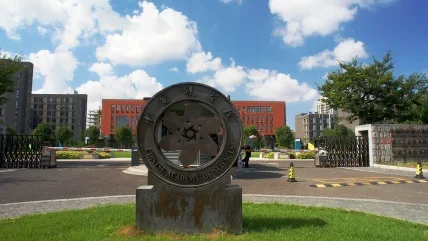
The Experimental Advanced Superconducting Tokamak (EAST), at the Institute of Plasma Physics under the Chinese Academy of Sciences (ASIPP) in Hefei, has set a new record by running for 403 seconds in a steady-state high-confinement long plasma operation.
The HT-7U reactor (EAST) is a doughnut-shaped tokamak that produces a high-temperature plasma kept under control by powerful electromagnets operating at hundreds of degrees below zero.
The recent run of the reactor broke its previous record set in May 2021 with a run of 101 seconds at a temperature at 120m degrees Celsius and a run of 20 seconds at 160m degrees Celsius. The latest results were achieved after the researchers had made 120,000 previous attempts and will provide critical data for the operation of the International Thermonuclear Experimental Reactor (ITER) under construction in France.
In December 2021, under a different experiment, EAST set a record maintaining a stable plasma at 70m degrees Celsius for 1056 seconds (17.6 minutes). Although the run duration of the reactor was shorter in the most recent experiment, its significance lies in the fact that the reactor was run in high confinement mode. Song Yuntao, ASIPP director, told Xinhua that, in this mode, the temperature and density of the particles are greatly increased, which is an important step toward achieving higher operational efficiency of fusion power plants in the future.
Since its launch in 2006, the EAST reactor has been an experimental testbed for nuclear fusion researchers in China. In July 2017, EAST became the first tokamak to sustain H-Mode plasma for over 100 seconds at around 50m degrees Celsius.
China started nuclear fusion research in the 1960s and included construction of the HL-1 (upgrade HL-1M) in SWIP and other small tokamaks such as the KT-5 in the University of Sciences and Technology of China (USTC) and the upgraded CT-6B at the Institute of Physics of the Chinese Academy of Sciences (IP CAS) in Beijing as well as the first domestic superconducting tokamak, the medium sized tokamak HT-7 at ASIPP.
The HL-2M tokamak, independently designed and built by CNNC’s Southwestern Institute of Physics (SWIP) in Chengdu, Sichuan Province, was completed in November 2019 and achieved its first plasma discharge in December 2020. HL-2M is an upgrade of the HL-2Aand is one of the three large-scale domestic tokamaks now in operation in China. The other two are EAST and J-TEXT at the Huazhong University of Science and Technology.
Meanwhile, work on the engineering design of the China Fusion Engineering Test Reactor (CFETR) has been completed. The CFETR is considered the next-generation fusion reactor and aims to be the world’s first fusion energy demonstrator. Construction of the reactor is expected to be completed by 2035.


